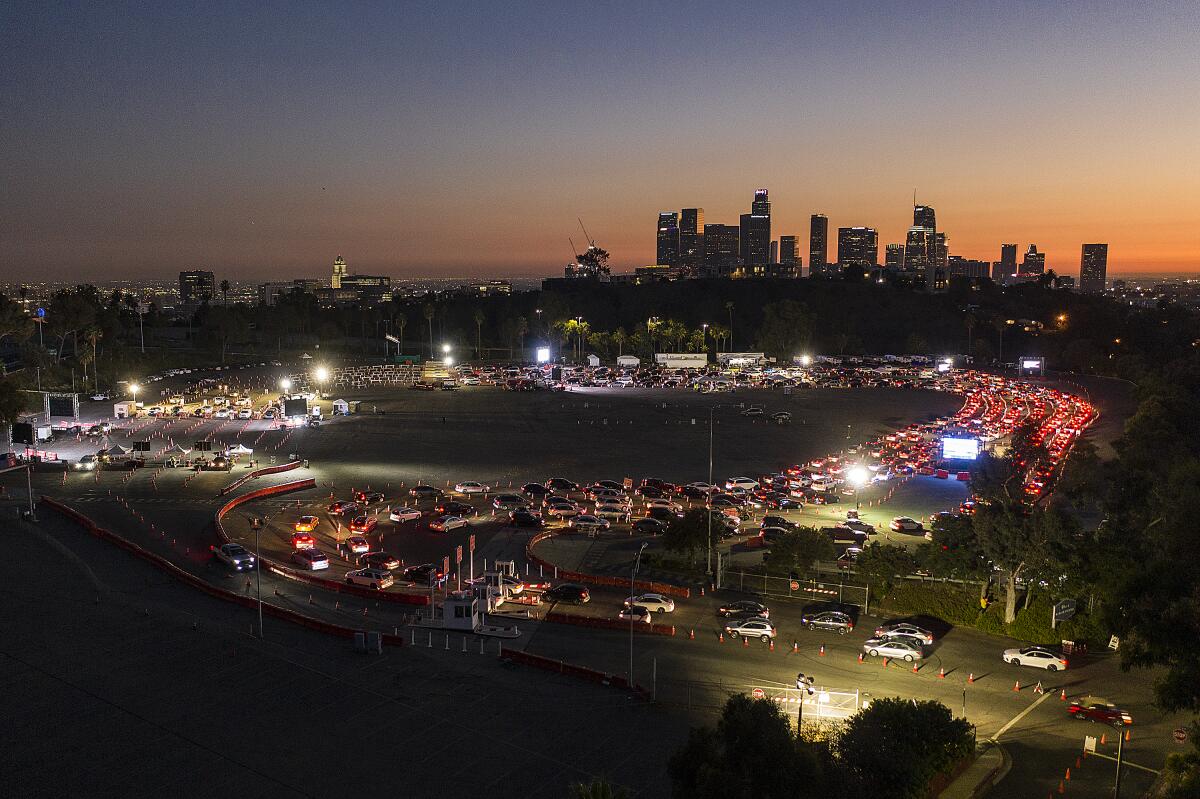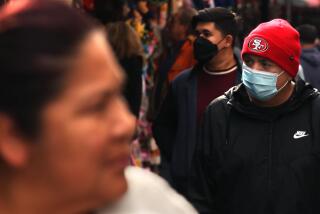It started with one sick woman in San Jose. Now, the coronavirus has spread to 1 million Californians

Back in January, when Patricia Dowd became sick with flu-like symptoms and had to cancel plans to go to a funeral, it would be impossible to fathom what her illness foretold for California and the rest of the nation.
Dowd, a 57-year-old manager for a Silicon Valley semiconductor company, seemed to recover. But within about a week, Dowdâs daughter found her mother dead at her San Jose home. It was Feb. 6, and Dowd is believed to be the first person to die of COVID-19 on American soil.
In those early days, when Dowdâs death wasnât publicly known, coronavirus seemed to be a distant, contained outbreak posing little threat. Something that might be held in check by keeping a cruise ship filled with infected passengers in limbo off the coast of San Francisco, or by aggressively screening flights coming in from China.
Today, COVID-19 is everywhere. As of Thursday â 10 months after Dowd fell ill â more than 1 million Californians have been confirmed to be infected.
Among those who became sick, more than 18,100 have died, and even more who survived are suffering long-term consequences of the illness. Trying to stave off additional infections has also resulted in millions losing their jobs, with unemployment reaching record highs in the state. Even for those spared the worst, the pandemic has upended their lives.
California hit this latest milestone as the number of COVID-19 cases and hospitalizations are both on the rise in California, echoing increases nationwide. Many dispirited Californians are rethinking plans to gather with loved ones on Thanksgiving, making yet another sacrifice in an already tough year. A âdark winter,â in the words of President-elect Joe Biden.
But much like the promise of two-week stay-at-home orders and warm summer weather vanquishing the virus, the days of a clean narrative about Californiaâs experience with the pandemic are far behind us. The inescapability of the virus is clear, but so are Californiaâs persistent efforts to trudge through.
Gov. Gavin Newsom has announced a stay-at-home order affecting most of California.
The record number of cases speaks to several early lapses in testing and pandemic preparation. It reveals both the lack of a national, coordinated response to the pandemic and the stateâs efforts to compensate with stricter measures and millions of dollars of resources.
But it also highlights recent improvements in medical treatments and precautions to protect the most vulnerable. It shows how Californians have sacrificed and suffered.
More than eight months into the pandemic, the state remains nowhere near reaching Gov. Gavin Newsomâs projection on March 19 that 25 million Californians could fall ill with COVID-19, even taking into account that many cases have probably been missed. California moved quickly to put in place a stay-at-home order and to make masking mandatory, preventing its hospital system from being overwhelmed.
The nightmarish scenes from New York of dying patients lined up in hallways and refrigerated trucks waiting outside for bodies never materialized here.
Californiaâs COVID-19 cases and deaths rank lower than most states when population is taken into account. With 1 million cases, approximately 2.5% of Californians have had COVID; that rate is higher in 36 states.
The picture appears much less favorable when you look outside the United States. The rate of infection in Sweden, which famously took a lax approach to the pandemic, is lower than in California. In South Korea, whose population exceeds Californiaâs by 10 million, just 28,000 people have tested positive for the virus.
UCLA epidemiologist Dr. Timothy Brewer said Californiaâs higher numbers show how challenging it is for states to try to control a pandemic without an overarching federal response. He added that improvements could be on the horizon with Biden taking office next year.
âItâs very difficult to try to protect a state within a federal system; we donât have the levers available to us,â he said. âCalifornia has managed to slow things down relative to other places, but we canât do it alone.â
Since the pandemic began, our knowledge of the virus has deepened dramatically. We have learned that masking works, that many people are asymptomatic, that poorly ventilated indoor environments are particularly dangerous. In many ways, the pandemic feels far different from how it did in the spring.
Yet, frustratingly, more information has not always resulted in less spread of the virus. It would turn out that a lack of understanding of COVID-19 would be only one reason it could not be sufficiently controlled.
Over the summer, in an attempt to jump-start the ailing economy, state and county leaders rushed to reopen businesses far faster than health experts had advised. The public, fatigued by unprecedented restrictions on their lives, interpreted these changes as a sign that life could return to some normalcy. The bigger-than-ever surge fueled by these factors accounts for more than half of the stateâs COVID-19 cases.
Those trends also brought a shift in who was falling ill and concentrated illnesses in people under 50. That lowered the death rate, since younger people are less likely to die of the virus, but it did not eliminate the risk that one of those people may infect a more vulnerable neighbor or parent.
A coronavirus outbreak tied to a wedding reception caused 177 infections and 7 COVID-19 deaths. It shows why health officials are nervous about holiday gatherings.
The state began to experience a reprieve in September, but the virus still circulated. There is an argument that the metaphor of waves is not accurate for COVID-19, particularly in California. Though the stateâs surges crest, they do not abate. There has not been a single day in California since March that a death from COVID-19 has not been reported.
Predictably, in the past few weeks, the spread of the virus has intensified again. There are currently 3,300 Californians in the hospital sickened with the virus, up 50% in the last month, according to state data. This comes as the nation as a whole hit an all-time high in hospitalizations this week.
In California, officials are pleading with residents to limit holiday travel. The current surge in the state is largely driven by social gatherings, even small ones, as people tire of isolation or even develop âCOVID resentment,â said California Health and Human Services Secretary Dr. Mark Ghaly.
He said people tend to be less careful around their family and friends because they feel close to them. But like so much of the pandemic, staying safe requires keeping distance from loved ones.
âOur guard may have come down, but we have to put it right back up,â Ghaly said this week.
On Tuesday, state officials forced 11 counties to tighten restrictions on businesses and to switch most to fully outdoor operations. But after so many months, it is unclear whether tinkering with business regulations will change peopleâs behavior.
Combined with holiday traditions that push people indoors, the direction things are headed as the state hits 1 million COVID cases âis not good â it is of serious concern,â said Bradley Pollock, chairman of the Department of Public Health Sciences at UC Davis.
He said he was particularly concerned about the arrival of chillier weather. Californians have been able to comfortably gather outdoors during an unusually warm fall while people in other parts of the country may have been forced indoors, but that may soon become untenable.
âThanksgiving is going to be a very fearful time in my book, because people feel they just have to get together,â he said. âI worry whatâs going to happen afterward.â
More to Read
Sign up for Essential California
The most important California stories and recommendations in your inbox every morning.
You may occasionally receive promotional content from the Los Angeles Times.














